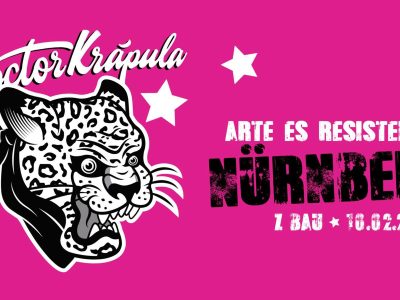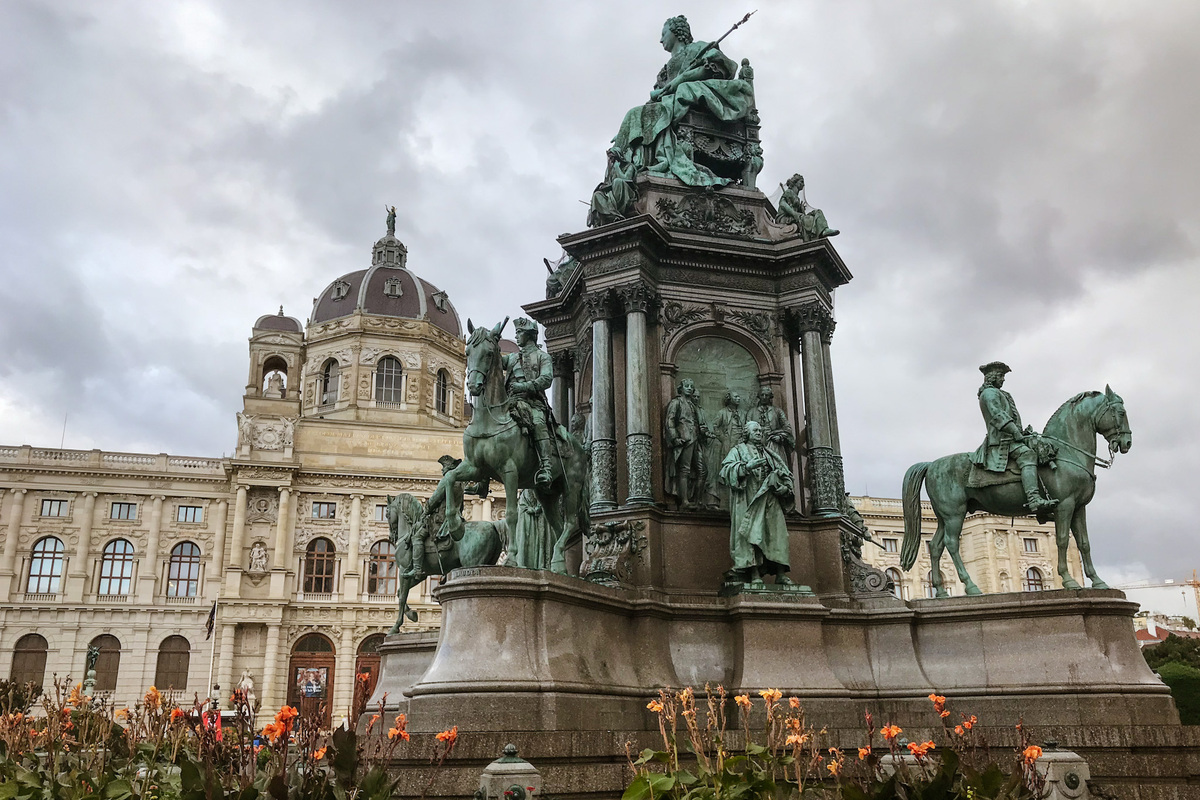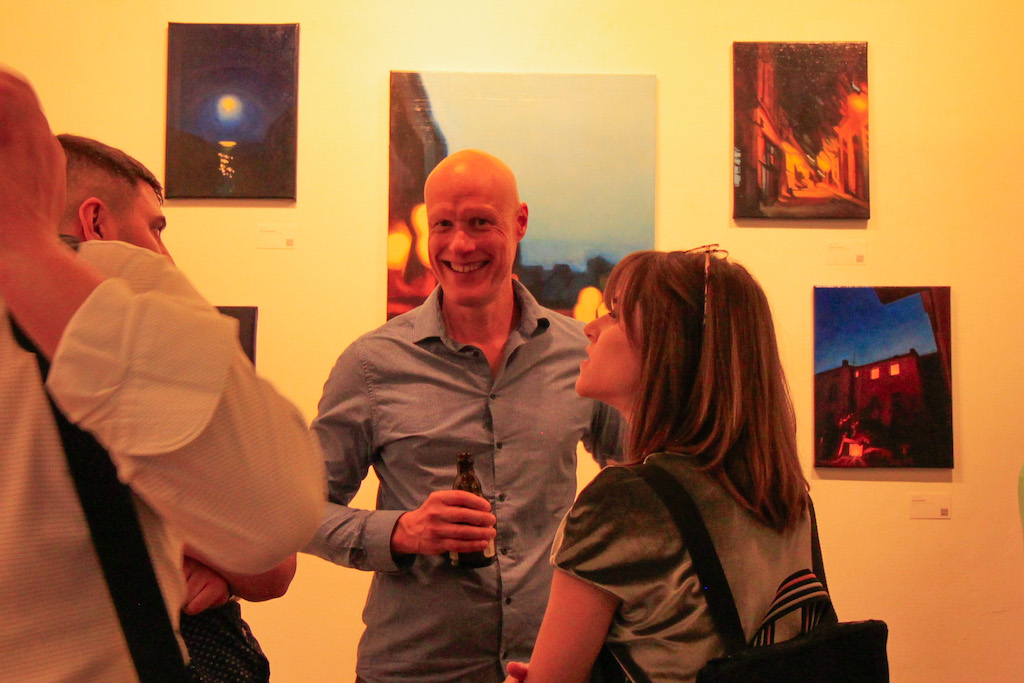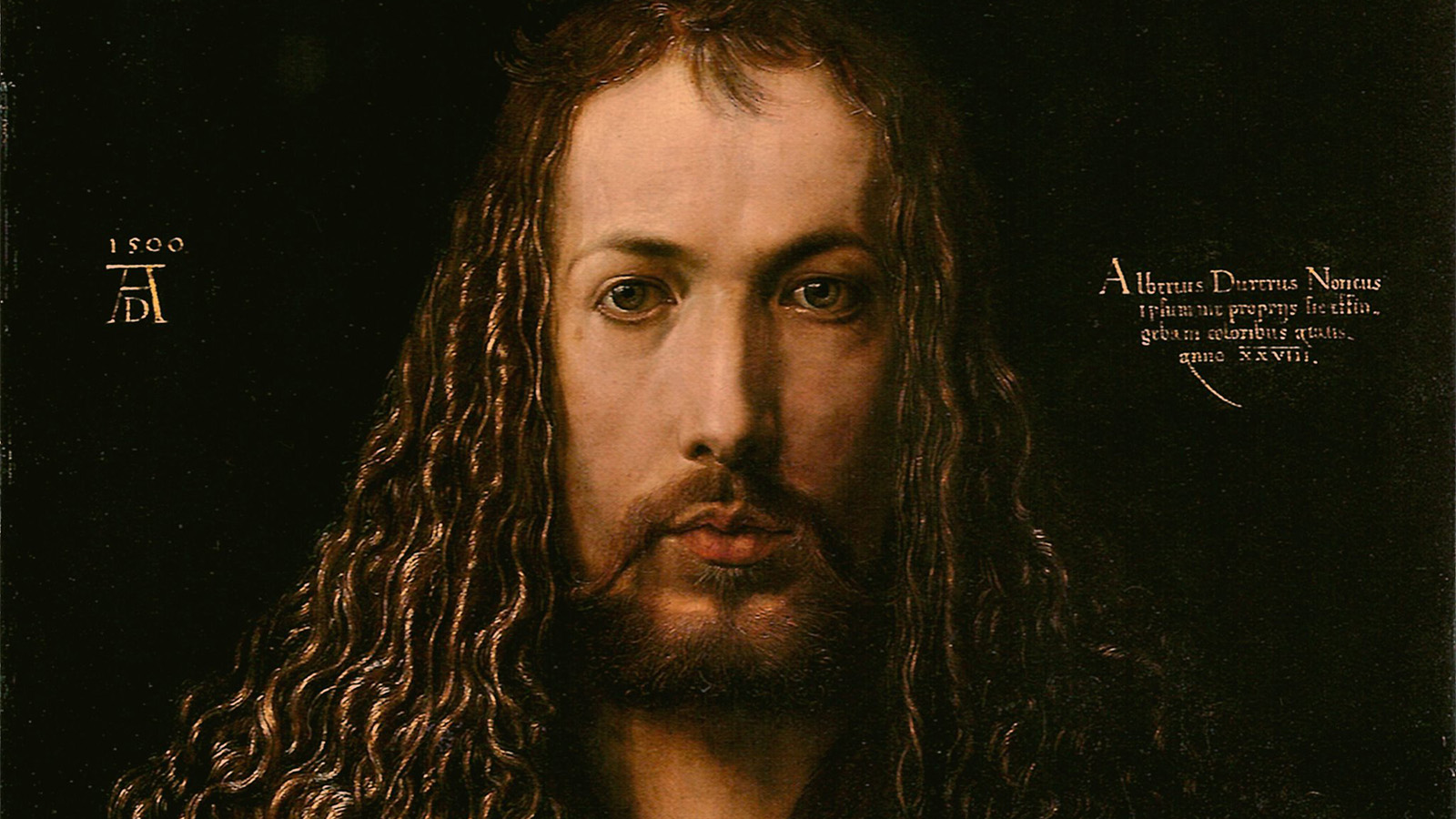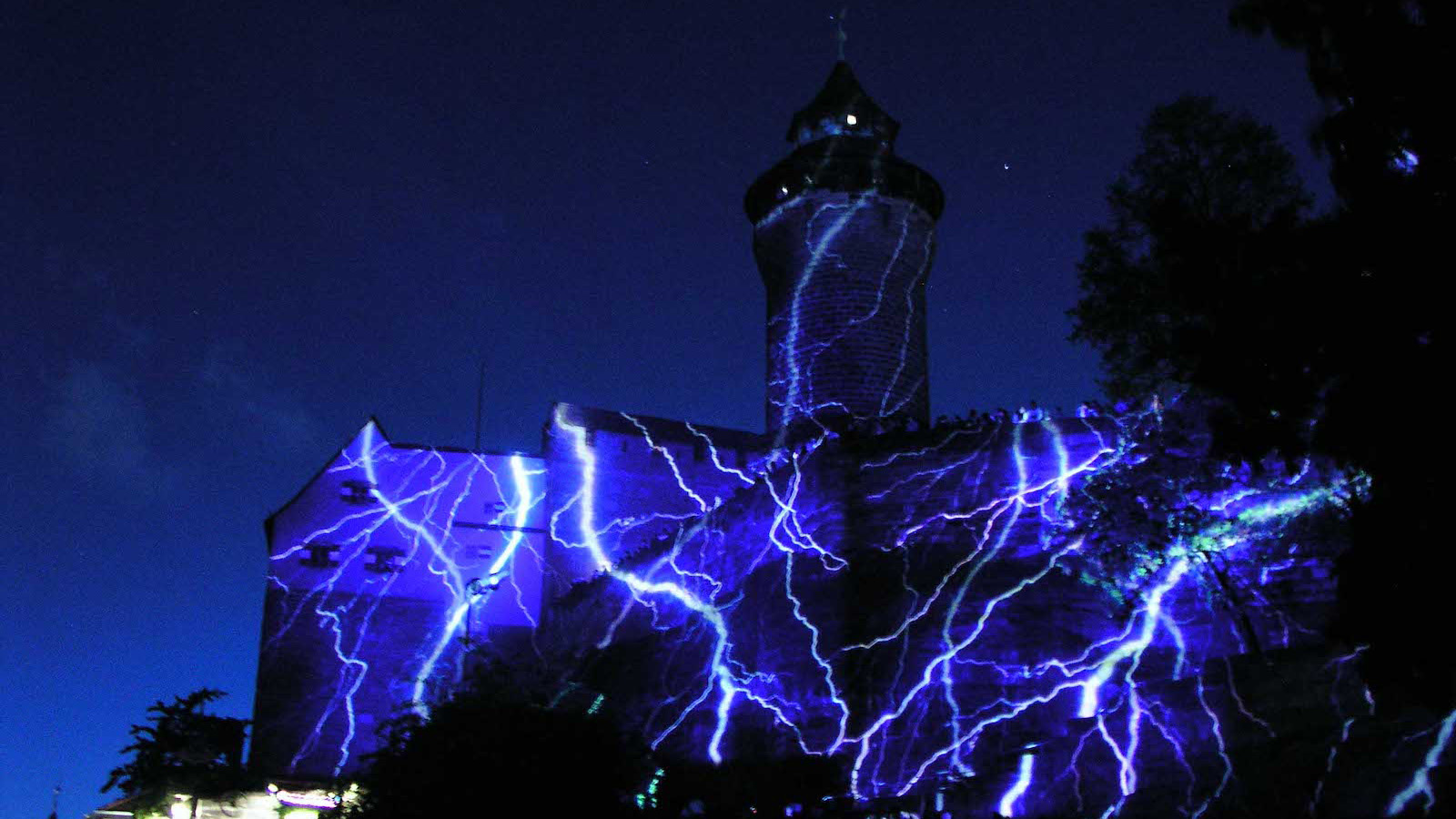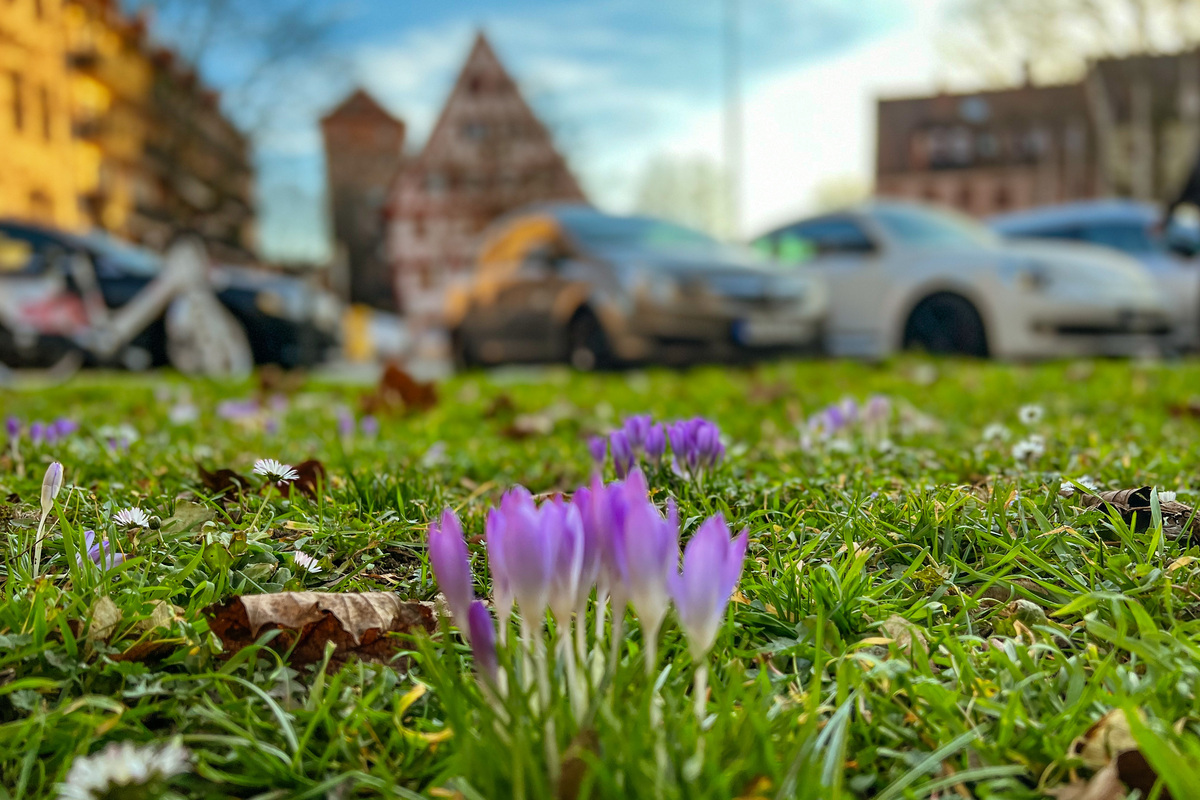In Nuremberg, the “beautiful fountain” contains many colourful statues depicting historical figures from Moses to Church Fathers, and even King Arthur. But there is one significant absence in this scene – the Pope.
The Beautiful Fountain, in German known as the “Schöner Brunnen”, is located in the northwest corner of Nuremberg’s Main Market Square. It resembles a Gothic church spire, and as legend suggests, it was originally intended to perch atop the Church of Our Lady (Frauenkirche), located on the east side of the market square. Upon further consideration, it was decided to be a waste to put such a beautiful work of art where it would be so difficult to view and it was converted into a fountain. The more likely theory is that city leaders commissioned a work celebrating the fountain, which delivered clean water to the city, channelled through four kilometres of wooden pipes, and built between 1389 and 1396.
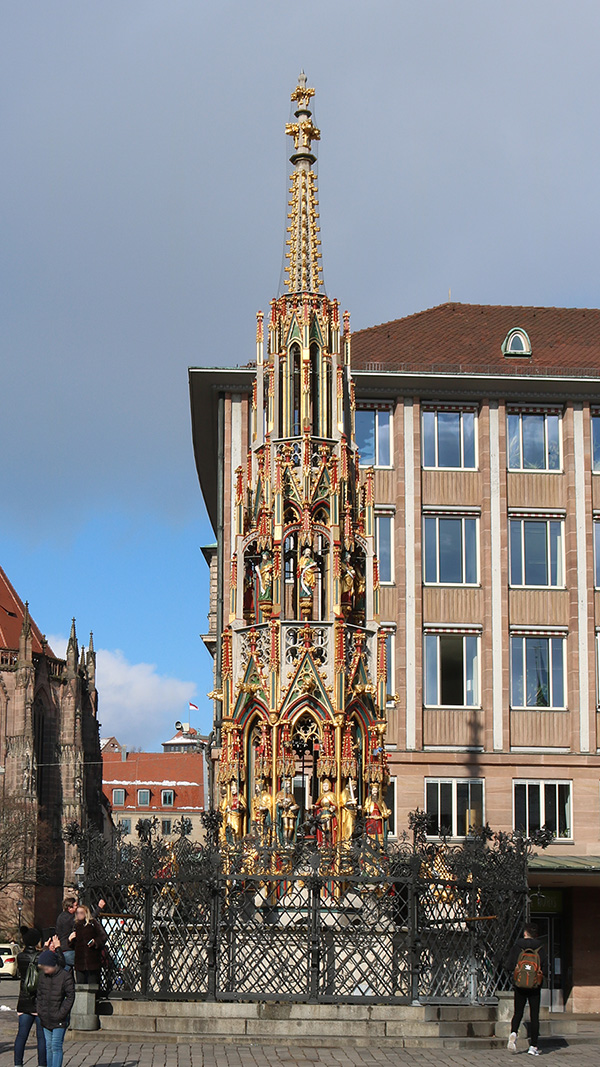
Beautiful Fountain, Main Market Square, Nuremberg.
In the highest echelon, standing above all worldly things, are the seven major Biblical prophets, with Moses holding his stone tablets and looking across the square to the Church of our Lady. Below, we find seven electoral princes of the Holy Roman Empire, as well as three Jewish, three Christian and three ancient heroes. Among these are Charlemagne, King Arthur, David, Hector of Troy and Caesar. With grotesque and twisted features, the enemies of Nuremberg are also represented, such as the Highwayman Eppelein from Gailingen (more about him in a later article!). In the bottom row, the smaller figures, including Pythagoras, Cicero and Socrates represent philosophy and the seven arts of the Middle Ages. Behind each is one of the four Evangelists or one of the four Church Fathers. They are, so to speak, monitoring whether or not the sciences are holding to the teachings of the church.
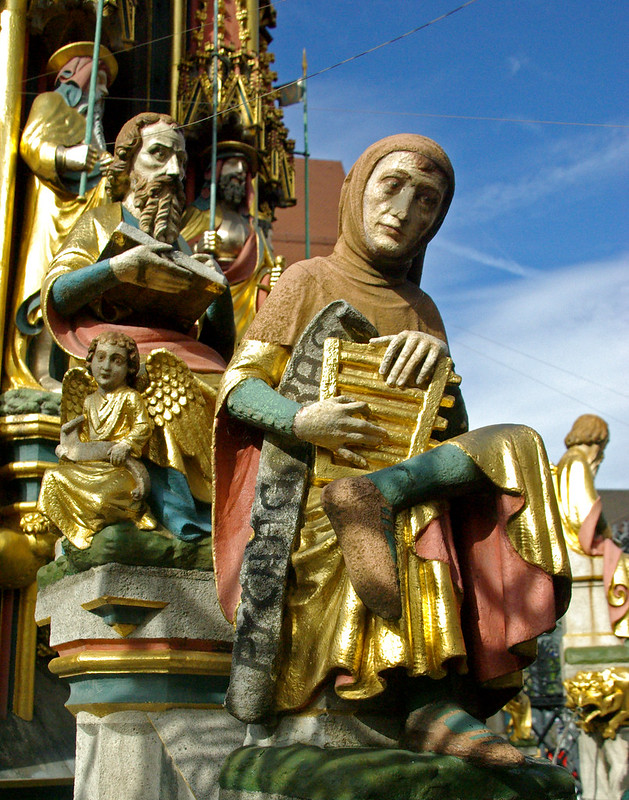
Pythagoras being watched over at the Schöner Brunnen. Photo by Sebastià Giralt on Foter.com
Among all those influential and honoured figures of the world who were important in the Holy Roman Empire, there is one who you will not find – the Pope himself. This is supposed to be due to the problematic relations between Emperor and Pope at the time. It may also have been influenced by the “Schism of 1378” in the catholic church and which led to a period lasting until 1417 when there were two rival Popes, one in Avignon and one in Rome. The dispute ended with the abdication of Pope Gregory XII in 1415, this was the last papal resignation until Pope Benedict XVI in 2013.
The fountain in its present form is a copy of the original, made around 100 years ago. The first, heavily eroded stone figures are displayed in the German National Museum in Nuremberg. During the Second World War, the fountain survived intact, protected inside a concrete casing.
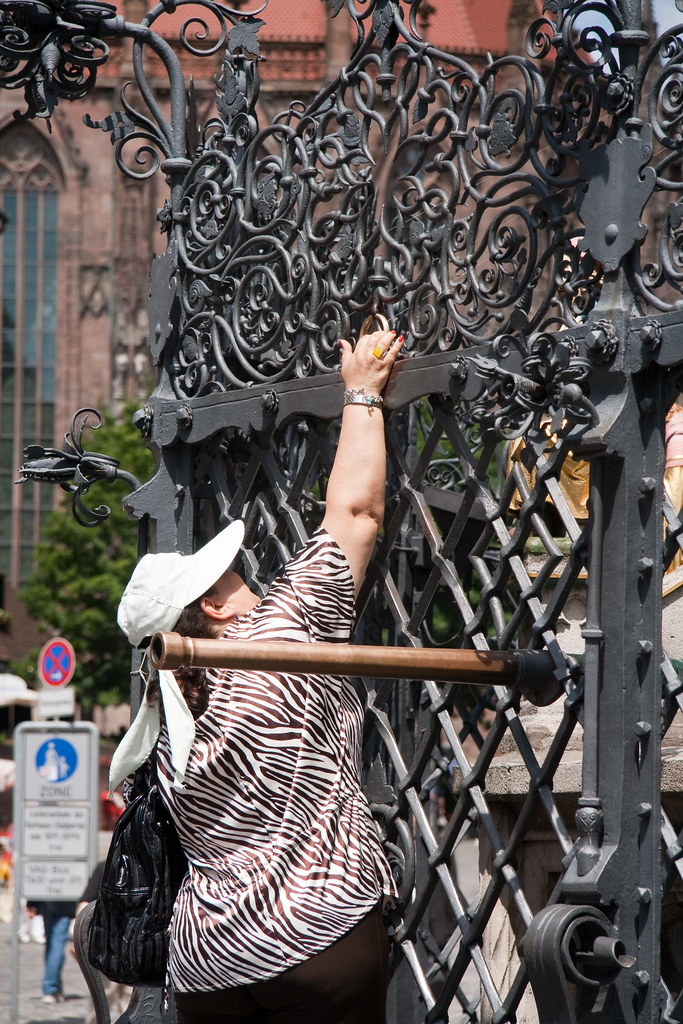
Turning the Golden Ring.
Photo by marcusjroberts on Foter.com
You can often observe people turning a golden ring in the iron railings around the fountain. This ring appears to be seamless and, according to legend, was crafted by a blacksmith’s apprentice in order to win the hand of his master’s daughter. It is said that if you turn the ring, a wish will be granted.
There would be another, far larger fountain standing in the market square today, but for a convoluted and controversial history. You’ll find this as well as other stories about Nuremberg in our continuing series History of Nuremberg. Stay tuned!


